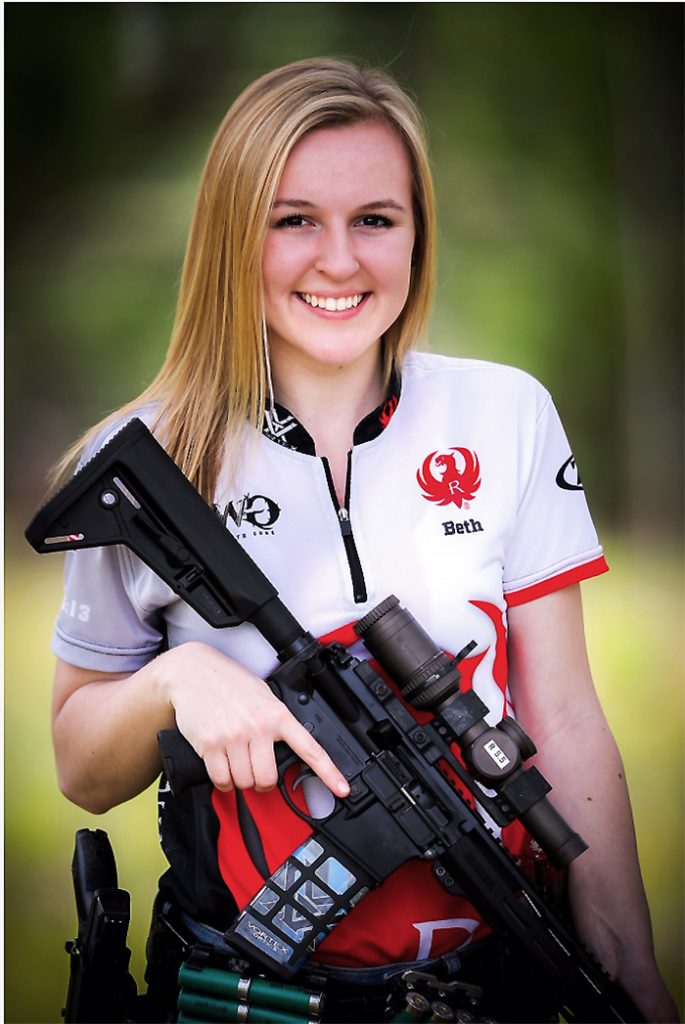Sturm, Ruger & Co., Inc. President and CEO Chris Killoy cited strong consumer demand for Ruger products, increases in production for each of its past seven quarters and the introduction of new products that met with strong consumer demand as reasons why the company’s net sales growth exceeded 50 percent for the first half of the year-even as National Instant Criminal Background Check System (NICS) background checks, as adjusted by NSSF, decreased by 5 percent for the period.
 During a conference call with analysts to discuss its second-quarter financial results, Killoy, shown right, revealed that the estimated unit sell-through of its products from the independent distributors to retailers increased 13 percent in the first half of 2021 compared to the 2020 comparable period.
During a conference call with analysts to discuss its second-quarter financial results, Killoy, shown right, revealed that the estimated unit sell-through of its products from the independent distributors to retailers increased 13 percent in the first half of 2021 compared to the 2020 comparable period.
Killoy reported that new product sales, excluding derivatives and product line extensions of mature product families, represented $78 million, or 22 percent of firearm sales, compared to $48 million, or 21 percent of firearm sales, in the first half of 2020.
For the second quarter ended June 30, net sales rose 53.6 percent to $200.1 million, compared to net sales of $130.3 million in the year-ago period. Diluted EPS surged almost 2.5x year-over-year. Bottom-line profits came in at $2.50 per share in the second quarter compared with diluted EPS of $1.05 per share in the second quarter of 2020. First-half sales were up 51.4 percent versus the comparable H1 period in 2020.
Company CFO Tom Dineen said the “substantial increase in profitability” for Q2 was attributable to “the increase in sales and production resulting in favorable leveraging of fixed costs including depreciation, engineering and other indirect labor expenses, a significant reduction in sales promotional activities, and improved labor efficiencies.”
Killoy walked analysts through the company’s bi-weekly SIOP (sales inventory and operations planning) process, where it reviews all product lines, including inventory at Ruger, inventory at its wholesalers and the sell-through from the company’s wholesalers to retailers. He said the company kept track of each product line, watching product flow and inventory flow into its distributors regardless of whether it’s Ruger inventory or competitors’ inventory. He said that process would not change. “We’re very flexible as far as our ability to moderate our production levels,” he said.

One area that continues to receive attention is the increase in women‘s participation in shooting sports. “We’re seeing many more female shooters coming into the marketplace,” Killoy acknowledged. “We see a much more diverse crowd at the firearms retail counter, and we think that bodes well for us long term. It’s great to see more women shooters in our ranks. We’re trying to make sure that we’ve got firearm products oriented toward females that are going to pick them up and use them.”
The CEO also said it looked forward to returning Marlin lever-action rifles, shown lead photo, which it plans to ship in the fourth quarter. Sturm, Ruger & Co. acquired the Marlin assets from Remington Outdoor Company in a $30 million deal that closed in November 2020 and was approved through bankruptcy proceedings.
“It will be a limited offering,” Killoy shared. “Initially, we’ll start with the model 1895, 1894 and the 336. Certainly not every model and SKU that our customers are looking for. It will take us a while to bring all of Marlin back to its full glory, but we’re excited about it. And, again, the focus is on those centerfire lever action SKUs in the beginning. The team has been doing a great job on that.” He said the company has been “delighted with the overwhelming interest and support received from Marlin fans.”
Killoy said that it is looking at the Marlin business almost as a new products business due to the amount of work that went into re-starting production.
“They were around for a long time in their former lives, but they’re certainly brand new to Ruger, and the amount of effort going into that is, frankly, a little staggering,” Killoy said. “The team has been doing a fantastic job when you think about standing up the supply chain, going through part by part, making sure every machine is up to speed—lots of work needed to be done. On a previous call, you may have heard me; we talked about over 100 tractor-trailer loads of machinery equipment, work in process, and parts coming our way. It’s been a big task, and a big undertaking down in Mayodan.”
Killoy said the brand was starting from scratch. “We got some machinery, some work in process, some raw materials, some parts, but we needed to stand up that line down in our facility in Mayodan, NC,” he detailed. “We’re working through that process. The guns we will be making in shipping in the fourth quarter will be parts and materials that we’ve made in the line, not things that we inherited or picked up in the sale. We’re excited about it. It’s been going great. We’ve got a great team in Mayodan. And, frankly, what’s been exciting for me is watching the level of effort expended by our other factories in Newport and Prescott, AZ, helping with the launch in Mayodan. We’ve got teams of engineers in those facilities working on small parts, working on wood stocks, things like that, and all of that’s going to combine to a great relaunch of Marlin in the fourth quarter.”
Still, Killoy did say it sees, “as most manufacturers in the U.S. see,” upward pressure on commodities and supply chain prices from its vendors as they deal with COVID-19 and supply chain shortages. He said the company took a three percent price increase last October, and it also took one in mid-June. “Just a few weeks ago, we implemented a three percent across-the-board price increase that went into effect. And that goes into effect, in Ruger’s case, on everything that begins shipping out the door. The only thing we price protect are prepaid orders and law enforcement orders that are already booked.”
The CEO said that the RGR workforce had been strengthened by approximately 400 employees since March 2020, an increase of 25 percent, while quarterly unit production had increased by over 200,000 units or 58 percent. “This outsized growth in production is indicative of our labor efficiency gains,” he said. “And despite the growth in our output at the end of the second quarter of 2021, our finished goods inventory and distributor inventories of Ruger products were 160,000 units lower than they were at the end of the first quarter of 2020. The last time these inventories were at what we would consider normal or expected pre-COVID-19 levels.”
Killoy shared that the company estimates that COVID-19-related costs will total approximately $1.5 million in 2021. Included in this estimate is a $200 bonus for every employee who becomes fully vaccinated.
Photos courtesy Ruger
















